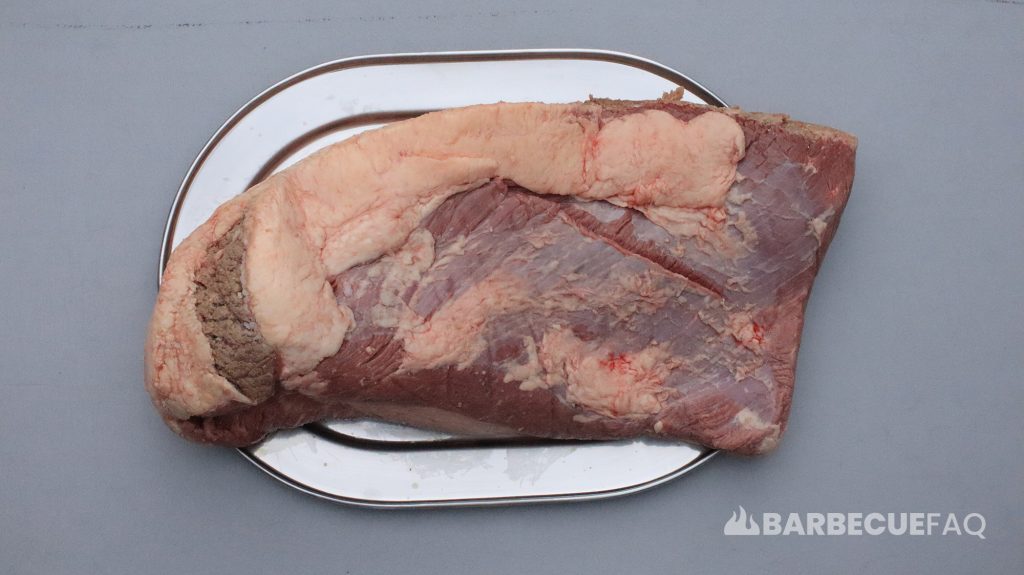Beef shanks are taken from the front and rear legs of the cow.
- If taken from the front they’re called foreshanks – which is from the knee to the shoulder.
- If they’re taken from the rear (hind), they’re called hindshanks – which is from the knee to the hip.

The term “shank” comes from a Germanic source related to Schenkel meaning “thigh.” More specifically referring to the portion of the leg from knee to ankle.
Typically the hind is more desirable for dishes like Osso Buco (translating to “hole in bone”) where the bone offers rich flavor via the marrow – making up for the lack of intramuscular fat.

The hind shank – while still tough – tends to be fattier; Where-as the fore-shank tends to be leaner.
Both still lend themselves to methods of cooking like braising, stewing, or slow roasting in a liquid.
What are the Sub-primal Cuts from the Shank Primal?
There’s really only one sub-primal cut from the beef shank, the shank cross-cut (pictured below):

As the name suggests, Butchers simply cut across the bone (the tibia) of the shank creating 1-1.5 inch thick pieces.
This cut often includes a circular section of bone, surrounded by lean meat.
The meat is also used for ground meat because it’s incredibly lean and the bones are used for things like bone-broth.
Improving Marketability of the Beef Shank
Other noteworthy ways of cutting beef shanks that you may see:
- Volcano beef shanks – sometimes called “Thor’s hammer”
- Boneless beef shanks – sometimes labeled as “Shin meat”
The former namesake has become popular over the years as a way for Butchers to increase marketability of this section of the cow.
More or less a volcano beef shank is a whole shank with the top portion frenched (with the bone cleaned); These typically weigh around 4-5 lbs (bone included).
Porter Road lists their Volcano Cut Beef Shank as $49 for 4.1-4.5 lbs meaning the price per pound is $10.98 – $11.95/lb.
Where-as a cross-cut beef shank from my local BJs is $4.49/lb.
Granted there are a few factors at play here – like shipping costs, beef quality, etc.
However, no matter the “beef quality”, shanks are going to be lean, tough, and sinewy; They lack fat and are tough regardless of beef grade.
What Dishes Typically Use Beef Shank?
Beef shanks aren’t super popular in the United States.
Some of the most common ways you’ll see them used are:
- For birria tacos – stewed meat that’s essentially made into chopped beef.
- Osso Buco – braised shanks with vegetables, white wine, and broth.
- Seared then braised in stock – similarly slow roasted in a crock pot.
- Caldo de Res – a hearty Mexican soup
- For making bone broth
Here’s my recipe for smoked beef shanks.
If you enjoy fall off the bone, gelatinized meat, you’d be hard pressed to find a better cut of meat at a similar price per pound – especially for beef.




